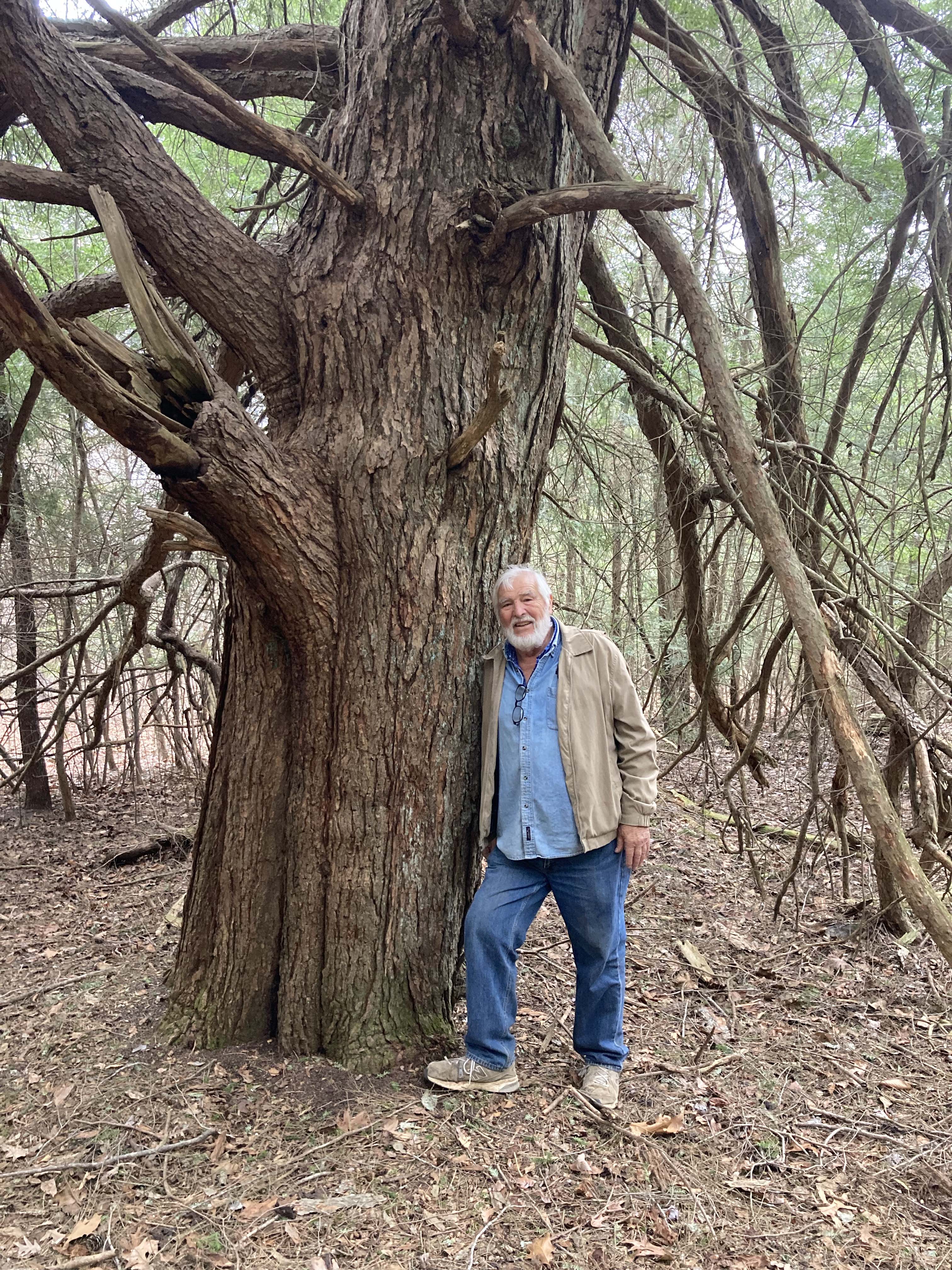Largest Eastern Hemlock in Arkansas
Contact
University of Arkansas System Division of Agriculture
Cooperative Extension Service
2301 S. University Ave.
Little Rock, AR 72204

Largest Eastern Hemlock in Arkansas
Last week, trapsing down a long-abandoned roadway in eastern Madison County here in the Ozarks, we stumbled upon a true mother tree – an enormous Eastern Hemlock (Tsuga canadensis). This lone giant was surrounded by maybe 15 acres of its children and grandchildren, huddled together on the north slope of a mountain ridge at about 2,000 feet. It is a state record holder and Champion Tree of its kind as judged by the state forestry commission.
Eastern hemlocks, or Canadian hemlocks as I learned them back in the day, is an evergreen conifer that grows from eastern Canada to the Great Lakes region, throughout New England and south down the spine of the Appalachian Mountains to north Georgia and Alabama. I found no indication that eastern hemlock ever grew in the Ozarks.
The tree is big and straight-trunked, with a diameter of 40 inches, a height of 70 feet and a crown spread of 51 feet. It dwarfs its offspring, few of which have a trunk diameter of much over 12 inches. Big hemlocks in the Mid-Atlantic region, where they grow best, often have trunks as large as 58 inches in diameter and heights over 100 feet.
During the last ice age, with the glacial maximum reaching as far south as northern Missouri about 20,000 years ago, the Ozarks were primarily an evergreen forest with spruce being the dominant species. Scientists can track species distribution with amazing accuracy by studying pollen deposited in the muck at the bottom of natural lakes. Two of these natural lakes (mostly sinkholes) are in the Missouri Ozarks and have accumulations that date back thousands of years.
Eastern hemlock moved back north from the southern Appalachians where it survived the ice age. As the ice melted, it infilled the spaces vacated by the retreating ice sheets. Because it primarily lurks in high places in the mountains or in cool, humusy woodlands of the northern reaches, it never moved into the heat and humidity of the Mississippi River valley and then on into the Ozarks. At least no pollen records have been found.
So how did this hemlock grove come to be?
As the site is on Ozark National Forest land, my first thought was that perhaps some curious forester planted it during the 1920s when the National Forest land was being assembled. But, because there is only one big tree, I discounted that notion. What self-respecting forester would plant just a single specimen?
Near the tree, perhaps 200 yards distance, is a rock wall and evidence of a woodland farmstead. As most of the early Ozark settlers migrated from eastern Tennessee and the Carolinas, I suspect one of them brought a sapling from the mountain home they were leaving.
The tree thrived in its new haunts and went on to establish its own brood of young. Hemlocks are monecious, with male and female flowers produced on the same tree. Once established it survived the droughts of the 1930s, ‘50s, 1980, 2011 and 2012. It would be interesting to study the children and grandchildren (please excuse the anthropomorphism) to see if there was a series of rainy and not-too-hot years when the seedlings were able to establish themselves before the often-brutal conditions of the Ozarks came back around.
In his classic, A Natural History of Trees of Eastern and Central North America, Donald Peattie wrote in 1958 that “The very opposite of a pioneer species, with its light-sensitive, drought-fearing seedlings, Hemlocks must wait until other trees have created a forest. When the ground has become strewn with centuries of leaf mold, and the shade so dense that other trees’ own seedlings cannot compete, the Hemlock moves in.” This non-native tree has found a niche in its new Ozarkian home, so does that make it a vile, invasive species?
But alas, this magnificent climax species that often lives over 500 years of age is in serious decline. Again. This current decline is because of the hemlock woolly adelgid, an imported insect, is killing large swaths of trees in its natural range of the northeastern and mid-Atlantic states. Pollen analysis shows that about 5,500 years ago hemlock numbers declined drastically and remained low until about 1,000 years ago. The cause of this population crash is hotly debated but probably revolved around some kind of habitat disruption, possibly climatic change.
Seeing this grand old tree and its many descendants was a real treat. The tree is probably not much more than 150 years old. I hope it reaches the 500-year mark and that generations of seedlings follow behind in its wake.
